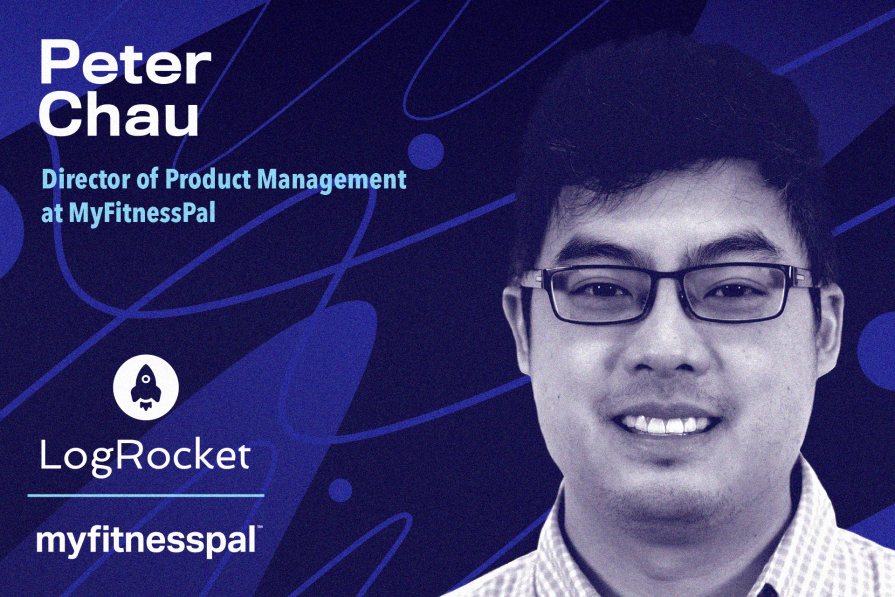Peter Chau is Director, Product Management at MyFitnessPal, a meal and physical activity tracking platform. He has “always enjoyed building things that make people’s lives easier” and started his career as a digital manager at The Home Depot. After getting his MBA from Emory University, he spent 10 years in the product organization at The Weather Channel before joining MyFitnessPal.

In our conversation, Peter discusses his focus at MyFitnessPal to close the gap in nutrition literacy by educating users on adequate nutrition intake during their health journeys. He talks about recent AI initiatives, including a new meal scanning technology, as well as their goal to increase content relevancy for users. Peter also shares the push to demonstrate value to users, not just from a feature sense, but as a holistic experience.
There were plenty of untapped opportunities in the business in which teams were trying to get to market as quickly as possible. My role as a growth PM was to skate to where the puck was going. Our overall goal, which remained a core value for the company, was to instill our users’ confidence in our technology and storytelling. Achieving these outcomes required a lot of diligence in market research and creating an experiment-led culture to constantly test and iterate certain outcomes.
Investing in this iterative approach to product development really enabled us to evolve our portfolio over those 10 years by measuring and improving the features based on what the data was telling us in real-time. There was a point where the product teams were running up to 20 experiments at the same time to gain insights on whether or not the product was sustainable for our users. And that’s something that I’ve carried throughout my career regardless of what business I was trying to impact.
Our app is one of the first places consumers turn to reach their health and fitness goals by unlocking the power of food and nutrition. According to recent studies, over 60 percent of consumers are confused about which foods are healthy. There’s a noticeable gap in food and nutrition literacy and our company is committed to enhancing the community’s understanding of the food nutrition industry. We have the largest and most comprehensive food database in the world — making it possible for users to track what they eat and monitor how their intake directly impacts their health and fitness goals.
We’ve been a part of many users’ health and wellness journeys, but we’re starting to see the number of use cases for people using our app grow. In addition to weight management, use cases now include things like preventive care to improving emotional health, all the way through nutrition.
Food education is paramount to developing a healthier lifestyle for our communities. We have the opportunity to enable our users to make more sustainable and smart food choices to better their emotional and physical habits.
In the next 10 years, we expect to see a rise in many diet-related illnesses including obesity, diabetes and heart disease. By 2030, our organization has committed to offering 1 million free MyFitnessPal Premium memberships to at-risk Americans through a collaboration with the White House Conference on Food and Nutrition.
We have a task force and a group of health professionals that help us with insights into that market. Nutrition literacy is still 100 percent important to the user’s health journey. We want to be the go-to source for food and nutrition information. There’s still a necessity in terms of knowledge to make sure people have an adequate nutrition intake in addition to using the GLP-1s. We feel that we complement that business. A lot of our staff is researching how we can better the experience and journey for GLP-1 patients.
Our current structure fosters a continuous learning and discovery environment where teams are empowered to build and adjust roadmaps to move certain KPIs. There is a norm for each team to stay data-driven and aware of what disruptions and advancements are happening in the industry. In my experience, high-performing teams stay agile and adaptable to their operations. The term “psychological safety” is used a lot when talking about ideating and experimenting, so we give each team member a shared expectation of what they can test, learn, risk, iterate, etc. They have confidence that their metric is vital to the health of innovation.
Our performance and product marketing teams are also included in many of our planning and product initiatives and they’re included early and often. This enables the team to launch products that stay true to the mission and the brand while keeping customers first.
By creating a culture of collaboration and experimentation. At MyFitnessPal, we do retros at every sprint and every team has their own sprint retros. We also do cross-functional retros and the teams really embrace that level of transparency and insight into how to improve and how to speed up velocity. Again, we’re all about increasing the accountability for teams. They take a lot of pride in their work and they want the sum to be greater than the parts.
There’s a norm or a team charter that each squad creates and it’s something that they adhere to. If there are conflicts or issues with deciding on what decisions to make, we work it out and we use retros to figure out how to improve some of those conversations.
We have several sources of our data. We use third-party data and databases to populate a lot of our foods but we also use crowdsourced data — folks who input data for foods that we might not have in our database. We’ve got a community of 200 million registered users and we’re available in over 174 countries. There are a lot of databases, localizations, and expectations. We have a team of curators who verify and curate a lot of the inputs that we’re getting, as well as a staff of dieticians and experts who help us with that curation.
An example I can give is of a recent product that we just launched. It’s our meal scanning technology in which we’ve implemented our own AI proprietary tech. This allows users to scan their meals with their cameras and connect with our food database to provide the proper serving size and foods to log without entering everything manually. It’s a machine learning product as well, so it’s a model that’s constantly being trained. The more people that use it, the better the output of our products.
We are exploring ways to increase the relevance of our content and our information to users through personalized insights. There are so many different types of diets and different types of users. Some people might use us from a fitness mindset, while others might use us more in a dietary mindset. Being able to personalize that experience through AI is something that we would like to explore.
We have a team dedicated to retention, and one of the things that we’re seeing is the need for an easy way for us to let users know the value of our products early in the user journey. We’ve done experiments where increasing the education of our products helps with churn and retention. Offering more immersive onboarding and tutorials has been something that demonstrates the value of our product. Now, we’re trying to get more creative in how we demonstrate value to our users, not just from a feature sense, but as a holistic experience.
We also want to get smarter about targeting audiences with relevant messaging. If you are a vegan, we don’t want to give you information that involves red meat. Creating smarter messaging and targeting capabilities with our different cohorts is one way that we’re trying to increase that contextual relevance with our users.
This is one of those things where we talk with our users and see what supplementary technology can benefit their experience. We are connected to over 30 apps in our space and we’ve got teams dedicated to ensuring that the information sent to our apps is useful and valuable to our users. Exercises and fitness goals affect your caloric intake per day, so we want to make sure that we look at the entire food journey, not just from a logging sense, but everything that adds up to caloric intake.
There are many ways to do this effectively. My team employs a very data-centric way of planning and coordinating their priorities. Ideally, we like to have the teams dedicate a percentage of their sprints to research, discovery, execution, and post-launch activities. One thing we also do is run dedicated design sprints to help cross-functional collaboration in addition to accelerating discovery tasks. Speed is currency in our world, so we tend to gravitate toward practices that enable quicker launch velocity.
Most teams practice retros and post-mortems for the majority of our initiatives, and we instill a blameless culture to encourage folks to speak up on ideas on ways to improve and optimize their cadence.
As a product-led org, all members need to embrace agile methods and commit to an iterative approach to product development. Companies will need to invest in the growth mindset because the term competitive advantage is elusive. The advantage most companies have is transient, so teams must have the flexibility to stay proactive and adjust to the demands of the market.

LogRocket identifies friction points in the user experience so you can make informed decisions about product and design changes that must happen to hit your goals.
With LogRocket, you can understand the scope of the issues affecting your product and prioritize the changes that need to be made. LogRocket simplifies workflows by allowing Engineering, Product, UX, and Design teams to work from the same data as you, eliminating any confusion about what needs to be done.
Get your teams on the same page — try LogRocket today.

Most product teams neglect tech debt, slowing growth and frustrating engineers. Learn five practical strategies PMs can use to manage it.

Shift from deterministic product thinking to a portfolio approach that helps PMs manage AI models, risk, and continuous change.

Early engineering input drives smarter roadmaps, faster delivery, and more innovative solutions that meet real customer needs.

Learn how AI can help PMs plan and run workshops that drive results from preparing agendas to facilitating discussions and summarizing work.